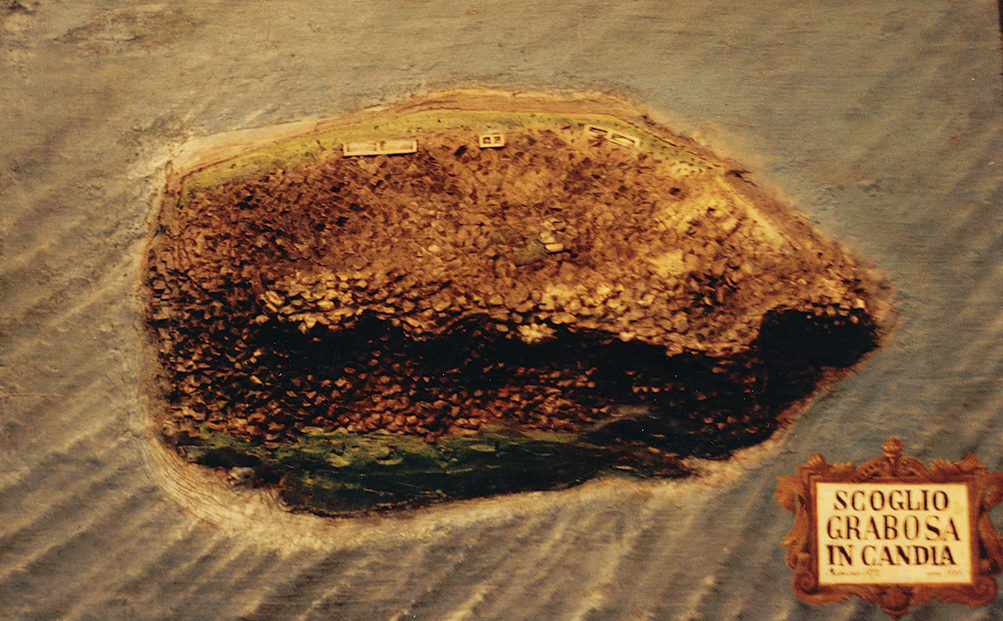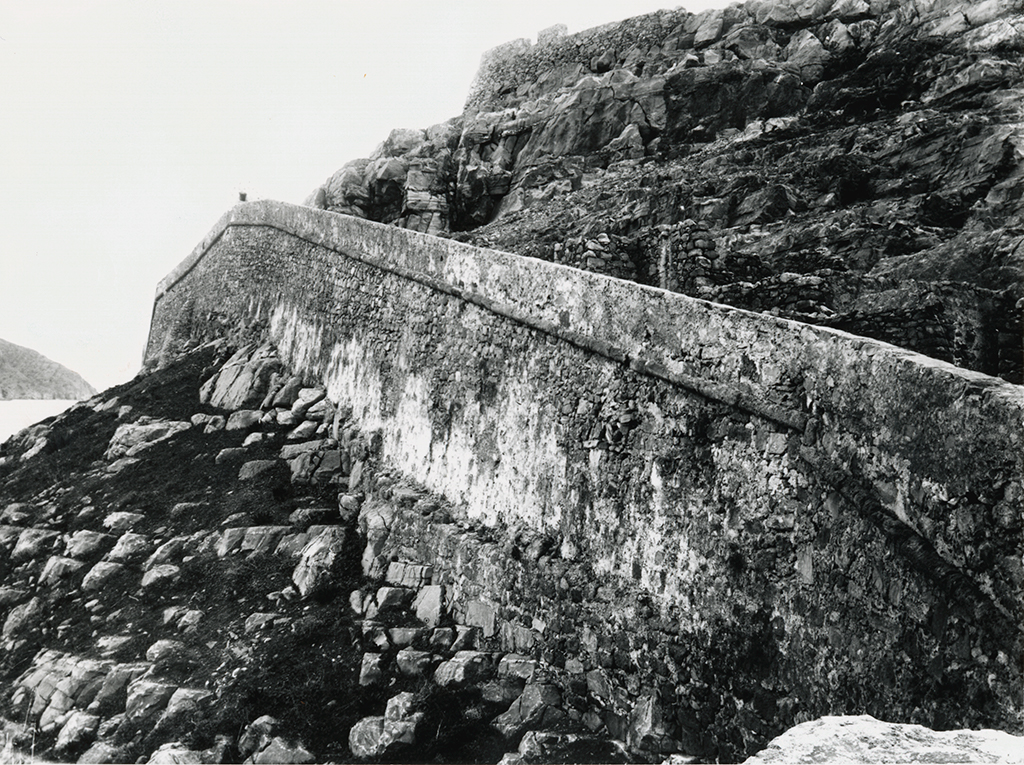Byzantine times
Information about Spinalonga before the Venetian period is scarce. The Venetians, when they begin their major fortification works, mention an "ancient wall" they find on the islet, part of which was captured by the camera lens of the Italian archaeologist Giuseppe Gerola in 1901 in the northwestern part of Spinalonga, where even today is partially preserved.
This fortification, initially dated to the Classical or Hellenistic periods (4th-3rd century BC), was linked to the defensive system of Olous, an important ancient city located at the cove of the Gulf of Elounda. However, recent research suggests that these ancient walls are built in the 7th or 8th century AD to face Arab attacks that, at this particular time, threatened the territories of the Byzantine Empire.
Τhe Byzantines, faced with the Arab threat, fortify the acropolis of Oxa, located above the city of Olous, and reinforce the island of Spinalonga to secure the gulf, a natural harbour. The construction techniques of the wall, as well as the ware from this period, which have been found on the islet, support the new dating of the old fortification.
Moreover, pottery provides evidence of human presence on Spinalonga during the 11th and 12th centuries. Future excavation research will undoubtedly shed more light on the role of the islet during antiquity and the Byzantine era.
Model of 1578 exhibited in the Maritime Museum of Venice, displaying the islet of Spinalonga before the grand Venetian fortifications began. You can see the old fortification, the cisterns and the church of Saint Nicholas. ©Museo Storico Navale di Venezia
Photo Gallery
The fortified acropolis of Oxa above the current settlement of Elounda. The fortification walls of the acropolis, like the first fortified enclosure of Spinalonga, were built to face Arab attacks. ©Ephorate of Antiquities of Lasithi
The Venetian wall on the north side of Spinalonga before it was destroyed by the opening of the perimeter road. At its base, part of the oldest Byzantine fortification can be seen. Photo by Italian archaeologist Giuseppe Gerola (1901). ©Vikelaia Municipal Library of Heraklion, Archives Department, G. Gerola Collection




